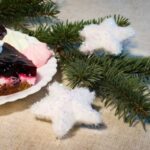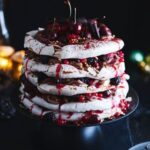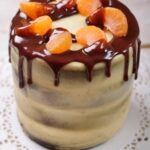Baking a flat cake is an essential skill to master if you are looking to create beautifully decorated cakes. A flat cake provides a smooth and even canvas for your decorating efforts, ensuring that your final creation looks visually appealing and polished. In this article, we will explore the importance of baking a flat cake and provide you with the necessary tips and techniques to achieve this desired result.
When it comes to cake preparation, achieving flatness is critical. A lopsided or uneven cake can make it challenging to apply frosting or fondant evenly, leading to a less professional-looking end result. By starting with a flat cake base, you have greater control over the decorating process. It allows you to easily stack multiple layers without worry of them sliding off or creating an unstable structure.
Choosing the right cake pan plays a significant role in achieving a flat cake. The size and material of the pan can impact how the heat distributes throughout the batter, affecting its rise during baking. Additionally, properly greasing and lining the cake pan prevents sticking and ensures even baking.
Greased sides help the batter cling to the sides as it bakes, allowing it to rise more evenly rather than doming in the center. Using parchment paper or flour dusting on the bottom also helps release the baked cake without causing any breakage.
Understanding the importance of good cake preparation for flatness (keywords
When it comes to baking a cake for decorating, one of the most crucial aspects is ensuring that the cake comes out perfectly flat. A flat cake provides a smooth and even surface, making it easier to decorate and achieve professional-looking results. In this section, we will explore why good cake preparation is essential for achieving flatness, and how it impacts the overall decorating process.
Proper cake preparation plays a significant role in achieving a flat result. The way you handle every step, from choosing the right cake pan to leveling the layers, can determine whether your final product will be perfectly level or not. Flatness is important because it provides a stable base for any decorative elements such as frosting, fondant, or piping.
One key factor in cake preparation is choosing the right type of pans. The material, size, and shape of the pan can all affect how evenly your cake bakes. Metal pans distribute heat more efficiently than glass or ceramic ones, resulting in better flatness. Additionally, using pans with straight sides rather than angled ones helps prevent doming and ensures an even rise throughout the entire cake.
To further ensure that your cake bakes evenly and doesn’t stick to the pan, properly greasing and lining the pan is essential. Greasing prevents sticking while lining with parchment paper allows for easy removal of the cake from the pan once baked. By preventing sticking, you avoid any potential damage to the surface and edges when trying to remove the cake from a sticky pan.
| Aspect | Tips/Information |
|---|---|
| Cake Pan Material | Metal pans distribute heat more evenly than glass or ceramic ones. |
| Cake Pan Shape | Straight-sided pans help prevent doming and ensure an even rise. |
| Greasing the Pan | Use butter or oil to grease the pan, ensuring every nook and cranny is covered. |
| Lining the Pan | Line the bottom of the pan with parchment paper for easy removal after baking. |
By following these cake preparation techniques, you can lay a solid foundation for achieving a flat cake. In the next sections, we will explore other important aspects such as accurately measuring ingredients and properly mixing the batter to further enhance flatness.
Choosing the right cake pan for baking a flat cake (keywords
Choosing the right cake pan for baking a flat cake is an essential step in achieving a smooth and even surface for decorating. The type and size of the pan you use can greatly impact the outcome of your cake. Here are some key factors to consider when choosing a cake pan for baking a flat cake:
- Material: Cake pans come in various materials, such as aluminum, stainless steel, and non-stick coated. Aluminum pans are preferred by many bakers because they distribute heat evenly, resulting in a more consistent bake. Non-stick pans can also be useful, but make sure to choose one that is well-made and has a durable coating.
- Size: The size of the cake pan should match the recipe you are using. If the pan is too small, the batter will overflow, causing uneven baking and potential sticking. On the other hand, if the pan is too big for the amount of batter, it may result in a thin and overcooked cake.
- Shape: Most cake pans come in round or square shapes, but there are also rectangular, heart-shaped, Bundt, and other specialty pans available. Choose a shape that suits your desired final look for your decorated cake.
In addition to these considerations, it’s important to note that investing in quality cake pans can make a significant difference in your baking results. Cheap or flimsy pans may not distribute heat evenly or have proper insulation which can cause uneven baking or burnt edges.
| Factors to Consider when Choosing a Cake Pan | Description |
|---|---|
| Material | Choose from aluminum for even heating or non-stick coated for easy release. |
| Size | Select the appropriate size according to your recipe to avoid overflow or thin cakes. |
| Shape | Consider the shape that aligns with your desired final look for your decorated cake. |
Once you have chosen the right cake pan, it is crucial to properly grease and line it before pouring in the batter. This will prevent sticking and ensure even baking.
The key is to evenly coat the entire interior surface of the pan with a thin layer of butter or vegetable shortening, then dust it with flour or line it with parchment paper. This combination will create a barrier between the cake batter and the metal, making it easier to remove the cake once it’s baked.
By selecting the right cake pan and taking proper greasing and lining precautions, you are setting yourself up for success in achieving a flat cake for decorating. This foundation will provide you with a smooth canvas to work on, allowing your creative decorating skills to shine through.
Properly greasing and lining the cake pan to prevent sticking and ensure even baking (keywords
Properly greasing and lining the cake pan is a crucial step in baking a flat cake for decorating. Not only does it prevent the cake from sticking to the pan, but it also ensures even baking, resulting in a smooth and level surface for decorating.
To grease the cake pan, you have several options. One popular choice is using butter or margarine. Simply take a small amount and spread it evenly on the bottom and sides of the pan using a pastry brush or your fingers. Another option is using non-stick cooking spray which can be sprayed directly onto the pan. Make sure to coat every nook and cranny, including the corners.
After greasing, lining the cake pan with parchment paper is recommended. This helps to further prevent sticking and makes it easier to remove the cake from the pan without damaging it. Cut out a circle of parchment paper that fits snugly in the bottom of the pan, then place it on top of the greased surface. Additionally, line the sides of the pan with strips of parchment paper that are tall enough to extend above the rim.
By properly greasing and lining your cake pan, you can ensure that your cake comes out easily after baking without any unnecessary breakage or sticking. This step also promotes even heat distribution throughout the batter, resulting in a uniformly baked cake that is perfectly flat for decorating.
To summarize:
- Grease your cake pan by spreading butter or applying non-stick cooking spray.
- Line your greased cake pan with parchment paper to prevent sticking.
- Use strips of parchment paper to line the sides of the pan as well.
- Properly greasing and lining your cake pan will result in an evenly baked and easy-to-remove flat cake for decorating purposes.
The importance of accurately measuring ingredients for a flat cake (keywords
Accurately measuring ingredients is a crucial step in baking a flat cake. In order to achieve the desired texture and structure, it is essential to measure the ingredients properly. Even small variations in measurements can significantly impact the outcome of the cake.
Using a kitchen scale for precise measurement
One of the best ways to ensure accurate measurements is by using a kitchen scale. Measuring ingredients by weight rather than volume provides greater precision, particularly when it comes to dry ingredients such as flour and sugar. Different brands of measuring cups can have slight variations in volume, which can affect the final result. By weighing ingredients, you can eliminate this inconsistency and have more control over your recipe.
Spoon and level method for dry ingredients
When measuring dry ingredients with measuring cups, it’s important to use the spoon and level method. This technique involves lightly spooning the ingredient into the cup, then using a straight edge (like a knife) to level off any excess. Avoid packing or pressing down on the ingredient, as this can result in too much being added to the recipe.
Measuring liquids accurately
For liquid ingredients, using a clear liquid measuring cup with markings is essential. Place the cup on a flat surface and pour in the liquid until it reaches the appropriate mark for your recipe. Be sure to check at eye level to ensure accuracy.
Mixing the cake batter correctly to achieve a flat result (keywords
Mixing the cake batter correctly is an essential step in achieving a flat result when baking a cake for decorating. Properly mixing the batter ensures that all the ingredients are well incorporated, resulting in an evenly baked and flat cake. Here are some tips on how to mix the cake batter correctly to achieve the desired flatness:
First, it is important to start with room temperature ingredients. When butter, eggs, and milk are at room temperature, they mix more easily and evenly into the batter, preventing lumps and uneven mixing. Take your ingredients out of the fridge about 30 minutes before you start baking.
Next, use the correct mixing method specified in your recipe. Most cake recipes call for either the creaming method or the reverse creaming method. The creaming method involves beating together butter and sugar until light and fluffy, followed by adding eggs and alternating dry and wet ingredients.
The reverse creaming method involves combining dry ingredients first, then gradually adding liquid ingredients and softened butter. Following the specified mixing method ensures that the ingredients are properly emulsified and results in a uniform texture.
Avoid overmixing the batter. Over-mixing can lead to gluten development, resulting in a dense and chewy texture rather than a light and fluffy one. Mix just until all the ingredients are fully blended; usually, this means stopping as soon as there are no traces of flour visible.
Finally, make sure to scrape down the sides of your mixing bowl periodically during mixing. This ensures that any pockets of unmixed ingredients or batter clinging to the sides are fully incorporated into the rest of the batter.
By following these tips and techniques for mixing your cake batter correctly, you will be on your way to achieving a beautifully flat cake that is perfect for decorating. A smooth surface will make it easier to apply frosting or fondant designs without any unwanted bulges or unevenness.
Baking the cake at the right temperature and time to avoid doming or sinking (keywords
Baking the cake at the right temperature and for the correct amount of time is crucial to achieve a flat cake that is ideal for decorating. This step is often overlooked, but it plays a significant role in preventing the cake from doming or sinking in the middle.
To ensure an evenly baked cake, it is important to preheat the oven according to the recipe instructions. Preheating allows for consistent heating throughout the baking process and helps prevent any sudden temperature fluctuations that can cause uneven baking.
In addition to preheating, using an oven thermometer is highly recommended. Ovens can sometimes have inaccurate temperature readings, so relying solely on the oven’s built-in thermostat may result in over or under-baked cakes. Checking and adjusting the temperature accordingly will help maintain a consistent heat for even baking.
The baking time specified in recipes serves as a general guideline, but it is crucial to check for doneness using other indicators. The most reliable method is inserting a toothpick or cake tester into the center of the cake. If it comes out clean or with just a few crumbs attached, the cake is ready. However, if there is batter clinging to the tester, continue baking for a few more minutes before testing again.
It’s important not to overbake the cake in fear of it being underdone. Overbaking can cause dryness and result in a compromised texture. To avoid this issue, set a timer when approaching towards the end of baking time and keep an eye on your cake to prevent overbaking while still ensuring it reaches full doneness.
By paying close attention to baking times and temperatures, you can significantly reduce or eliminate issues like doming or sinking that can result in an unevenly baked cake. With practice and careful monitoring during baking, you will be well on your way to creating perfectly flat cakes that are ready to be decorated.
Cooling and removing the cake from the pan without causing it to collapse or break (keywords
Cooling and removing the cake from the pan without causing it to collapse or break is a crucial step in achieving a flat cake for decorating. Improper handling during this stage can result in a cake that is uneven, cracked, or broken, making it difficult to work with and decorate. Here are some tips to help you cool and remove your cake from the pan successfully.
Firstly, it is important to let the cake cool completely in the pan before attempting to remove it. This allows the structure of the cake to set and firm up, reducing the risk of it collapsing or breaking apart. Place the pan on a wire rack and leave it undisturbed for about 10-15 minutes after removing it from the oven. During this time, the residual heat will continue to cook the center of the cake while gradually cooling down.
To prevent any sticking or tearing when removing the cake from the pan, it is essential to prepare the pan properly beforehand. Begin by running a butter knife along the sides of the pan to loosen any stuck edges of the cake.
Then, place a cooling rack upside-down on top of your cooled cake and firmly hold both together as you flip over. Gently tap on all sides of the bottom of your pan until you feel or see that your whole cake has loosened up.
If you find that your cake is still sticking to certain areas of the pan, try placing a kitchen towel soaked in hot water around those areas for a few seconds. The heat will help melt any residual fats or sugars holding onto your baked goods without compromising their structure.
By following these steps, you can ensure that your beautifully baked flat cake maintains its shape and texture when being removed from the pan. This will make it easier for you to level and stack multiple layers evenly for an attractive finished result when decorating your cake.
Leveling the cake layers to create a flat surface for decorating (keywords
Leveling the cake layers is a crucial step in creating a flat surface for decorating. This process ensures that each layer is the same height, resulting in a more visually appealing and professional-looking cake. Whether you’re planning to stack multiple layers or simply want a smooth canvas for your decorations, leveling the cake layers will help achieve the desired outcome.
Why leveling is important
When baking multiple layers for a cake, it’s common for them to have slight variations in height due to uneven rising or inconsistent batter distribution. Uneven cake layers can make it challenging to assemble and decorate your cake neatly. By leveling the layers, you eliminate any unevenness, providing a stable foundation for stacking and decorating.
Tools and techniques for leveling
There are several methods to level cake layers, depending on your preference and available tools. One popular approach involves using a serrated knife or a dedicated cake leveler. To begin, place your cooled cakes on a sturdy surface and ensure they are flat.
Carefully insert the serrated knife or leveler horizontally into one side of the cake at the highest point. Gradually saw back and forth while moving across the entire diameter of the cake. Repeat this process until you have a level surface.
Another option is investing in an adjustable wire cake leveler, which allows you to cut through multiple layers simultaneously with accurate precision. With this tool, you can adjust the height of the blades to match your desired layer thickness.
Tips for successful leveling
To achieve a perfectly leveled cake:
- Start with chilled cakes: Refrigerating or freezing your cakes before leveling them can make them less crumbly and easier to work with.
- Trim in small increments: It’s better to remove thin slices gradually rather than cutting off too much at once. This way, you have better control over achieving an even result.
- Keep your knife or leveler clean: Wipe off any excess crumbs or frosting between leveling each layer to maintain a clean cut.
Remember that practice makes perfect when it comes to leveling cake layers. It may take a few tries to find the method that works best for you, but with time and patience, you’ll be able to create beautifully leveled cakes ready for decorating.
Conclusion
In conclusion, mastering the art of baking a flat cake is essential for flawless decorating. The process starts with understanding the importance of good cake preparation and choosing the right cake pan. Properly greasing and lining the pan is also crucial to prevent sticking and ensure even baking. Accurately measuring ingredients and mixing the batter correctly are important steps to achieve a flat result.
Baking the cake at the right temperature and time is key to avoiding doming or sinking. Once the cake is baked, it should be cooled and removed from the pan without causing it to collapse or break. Leveling the cake layers is another crucial step to create a flat surface for decorating.
By following these steps, you can master the art of baking a flat cake and achieve flawless decorating results. Remember, practice makes perfect, so don’t be discouraged if your first attempts are not perfect. With time and experience, you will become more confident in your baking skills and create beautifully decorated cakes that impress everyone who sees them.
So go ahead, start practicing your flat cake baking techniques, experiment with different flavors and decorations, and enjoy the process of creating delicious works of art that not only taste amazing but also look stunning on any dessert table.
Frequently Asked Questions
Can a cake go flat in the oven?
Yes, a cake can indeed go flat in the oven. This can happen for various reasons including incorrect ingredient proportions, overmixing the batter, or using expired baking powder or baking soda. When the leavening agents in the cake fail to create enough air bubbles to lift the batter, the cake will not rise properly and may turn out flat.
How do you bake a cake so it’s flat?
To bake a cake so it’s flat, there are a few key steps you can follow. Firstly, ensure that your oven is preheated to the correct temperature as stated in the recipe. It’s also important to use the right size of baking pan so that the batter spreads evenly and doesn’t overflow.
Additionally, be sure to level out the batter in the pan before baking by spreading it with a spatula or shaking it gently to eliminate any air pockets. Finally, avoid opening the oven door too frequently during baking as this can cause fluctuations in temperature and potentially result in a flat cake.
How do you make a cake flat without cutting it?
If you’re looking to make a cake flat without cutting it horizontally after baking, there are a couple of methods you can try. One option is to use baking strips around the exterior of your cake pans before placing them in the oven. These strips insulate the sides of the pans and prevent them from heating up too quickly, resulting in an evenly baked cake that is less likely to dome in the middle.
Alternatively, you can also try using a lower temperature when baking your cakes which promotes slower and more even rising throughout without excessive doming on top. By experimenting with different techniques and adjustments to your recipe, you can achieve a flatter cake without having to resort to slicing off excess height afterwards.

Welcome to my blog about home and family. This blog is a place where I will share my thoughts, ideas, and experiences related to these important topics. I am a stay-at-home mom with two young children. I hope you enjoy reading it! and may find some helpful tips and ideas that will make your home and family life even better!





